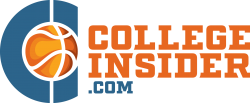Working Out
Working Out
This feature was written when Bob Marlin was the head coach at Sam Houston State University
Two years I received a memo from our compliance officer, informing me that the NCAA had made an adjustment to the guidelines for pre-season workouts. Each player was still afforded two-hours per week to work with a member of the coaching staff. That hasn’t changed. What it is different is that we are unable to work out the entire team until Sept. 15.
This is a good rule. Under the old guidelines, some coaches were bypassing the individual workouts for one two-hour practice with the entire team. It was defeating the entire purpose for having individual workouts. Furthermore, it was unfair to schools on the quarter system. A program like UCLA doesn’t begin school until late September.
Most important to note is the fact that some (not all) were taking advantage of this time period to conduct practice. At the DI level, individual workouts are so important so it is good to see a rule change that supports the idea of seeing the kids improve. After all, that is what the college experience is supposed to be all about. Getting prepared for the next step in life.
One of the first things we relay to potential recruits is the idea that we can make them better players. We never tell a kid that they are a great player. We tell them that they are good players and we can make them better. A big part of that process involves individual workouts.
Coaches in the Southland Conference have told us repeatedly that our kids have consistently improved with each year in college. It’s really more of a testament to the players. They make the commitment to become better players. We simply provide the instructions.
I have always found that most kids want to learn and most kids want to become better. They may come from different places and they may have different levels of talent, but they all have one thing in common. They all want to win. For us that process begins the first time a student athlete steps on campus in his rookie season.
Keeping with the two-hours per player per week model, a typical week for us would be three 40-minute sessions, with as many as four players at a time. Once Sept. 15 rolls around our weekly schedule will look something like this:
- 40 minutes with four players. Ideally it would be best to have either four guards or four post players. For the purposes of this forum let’s say four guards.
- 40 minutes with the same four players.
- 40 minutes with those four players and the rest of the team.
Post players would follow the same model.
Things we would work on would include footwork (pivoting), ball handling and a lot of shooting. Most of the workouts would focus on the offensive aspects of the game. Defense is something that I have always waited until full practice begins to address. We would put an emphasis on both strengths and weaknesses. We want to see you make your weaknesses into strengths, but we also want to see your strengths become stronger.
This season full practice will begin on Oct. 13 (the closest Friday to Oct. 15). However the start of full practice does not mean that individual workouts are abandoned.
Once the season begins the approach to individual workout regiments vary, from coach to coach. At some level there the individual instruction continues, but to what degree would depend on the program.
Here at Sam Houston State we give the players the responsibility. Our kids know what they need to do so we leave it up to them, as to whether or not they need additional help. If someone wants to work on a particular aspect of their game, they just knock on my door.
Florida head coach Billy Donovan has a different approach. Many of you may recall what a hard-nosed player Billy was, during his days at Providence and in the NBA. He may not have been the most talented player on the floor, but nobody was going to out-work him. He has brought that philosophy to the coaching ranks, especially as it pertains to individual workouts.
Billy has a couple of rules.
1. Redshirts will have individual workouts on the day of game. They aren’t eligible to play, but that doesn’t mean they can’t work.
2. Those player who play less then 15 minutes on game day will have an individual workout the day after a game. They didn’t sweat quite enough on game night, but there is always tomorrow to work a little more.
I have had the opportunity to see how Billy does things and I don’t think there is any question that he doesn’t get nearly the credit he deserves. I also don’t think it’s an accident that his team accomplished what it did last season. His approach to individual workouts is a big reason the Florida Gators are the defending National Champions.
Of course Billy will tell you that it’s still all about the desire to work. As I noted previously, we simply provide the instructions. It’s up to the player to do the work.
How hard a player works is relative to the character of that individual. There are guys that talk about getting better and there are guys that just work hard.
When I was a junior college coach at Pensacola, FL, I had a player named Anthony Goldwyre who fit that bill. He was a very good player, but every time he stepped on a court his intention was to become a better player. That was epitomized by one Sunday evening.
It was 10:30 p.m. and I was headed home after a day with friends and family. As I was approaching the campus I noticed the lights in the gym were on. In retrospect I should not have been surprised to find Anthony on the floor working on his game.
That hard work would pay off as he went from a solid player to a player that was recruited by Arkansas, Connecticut, Houston, Memphis State and Southern California. He considered Arkansas, but like the others they were deep at the guard position so he opted for Houston. The Razorbacks went on to win the National Championship that season.
Anthony was a very good player who became a great player through hard work and desire. When his collegiate career was over he was a second round selection by the Phoenix Suns.
Granted, Anthony had exceptional talent, but he is a great example of how talent alone is not always good enough. Through his individual workouts and his self-commitment, he became a great player.
As coaches all we can really do is provide the instruction. It’s still up to the individual to make the commitment, but I really believe you can accelerate that process through the individual workouts. You can accomplish in smaller groups and you set the table for the players to pursue more on their own.


